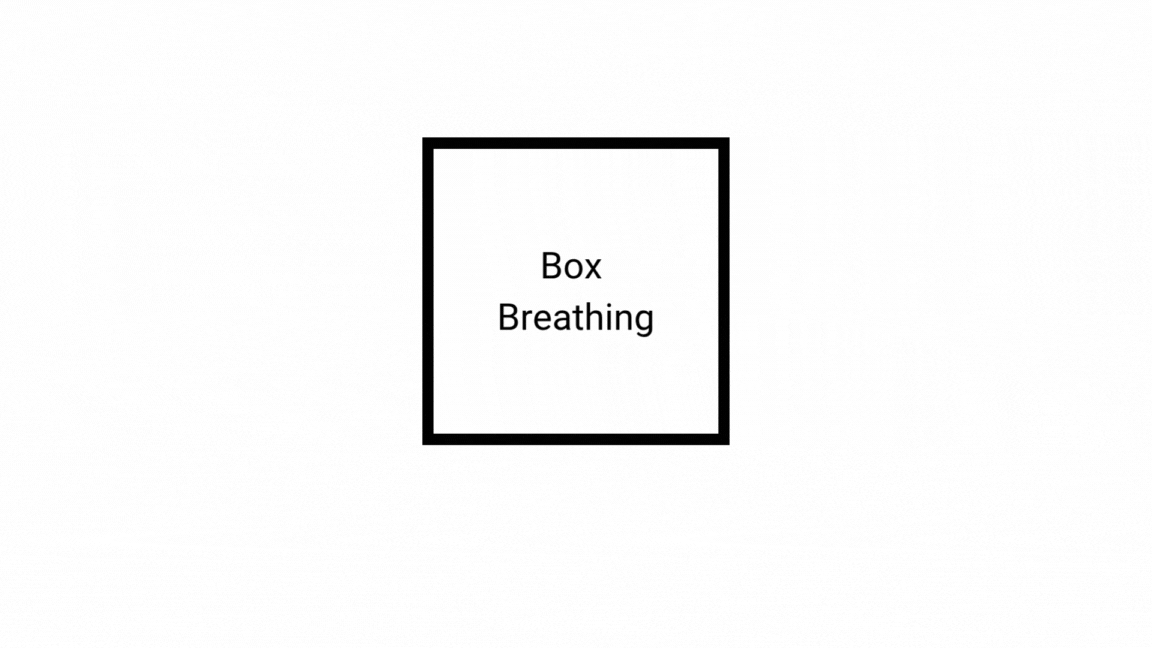
Managing Stress at Work
Goal: Learn stress-management strategies that support our well-being.
“You cannot always control what goes on outside. But you can always control what goes on inside.”
– Wayne W. Dyer, Motivational Speaker
Reflect: How might this idea help when you are feeling stressed?

4

Relevant
Self-Advocate: Speaking up for yourself to get the help or support you need.


Vocabulary
Reactive: To respond or take action when something happens.
Proactive: To take steps ahead of time and anticipate potential issues or problems before they happen.
7 CATEGORIES
Connection
Choose a category to reveal a get-to-know-you question.

4


7 CATEGORIES
Connection
If you could send a message to your future self about your career, what would it say?
7 CATEGORIES
Connection
What commercial, slogan, or marketing campaign from your childhood stands out as the most memorable? What made it so unforgettable?
7 CATEGORIES
Connection
Would you rather have a job you love with a modest salary, or a job you don’t enjoy with a high-paying salary? Why?
7 CATEGORIES
Connection
What is a childhood interest that you continue to pursue and learn about today?
7 CATEGORIES
Connection
If your dream job was offered anywhere in the world, where would you want to go?
7 CATEGORIES
Connection
If you could launch your own channel, what unique skill or talent would you showcase or teach to the world?
7 CATEGORIES
Connection
What is a memorable piece of wisdom or advice that has greatly impacted you? Who shared it with you?

Why: Stress management strategies can enhance well-being and contribute to job success, especially during busy or challenging times.

Managing Stress at Work

16


There are many things people do to help them manage stress.
This or That
Discuss:
What would you choose for each ‘This or That’? Why?


3


Deep Breathe
Go for a Walk
OR
OR
Listen to Music
Talk to a Friend
OR
Journal
Stretch
OR
Laugh it Out
Cry it Out
OR
Spend Time Alone
Hangout with Friends
Watch TV
Take a Nap
OR
Exercise
Meditate
OR
Advance slide for some science
Did you know?
Chewing gum can help reduce stress!
Studies have shown that chewing gum can lower cortisol levels, the body's primary stress hormone and improve alertness and mood during stressful situations.
Smith, A.P. (2016)

Everyone deals with work stress. Some of it we can change, and some we can’t.
The key to managing stress is focusing on what is in our control.

1/2


Managing
Stress at Work

What parts of a career are in your control? What parts are not?


2


In My
Control
Out of My Control
Who I work with
How I work
with others
Example:
What Can I
Control at Work?
1


-
My attitude and effort
-
How I treat my coworkers
-
How I manage my time
-
My willingness to learn
-
If I follow directions
-
The attitude of others
-
Company rules
-
Company benefits
-
Promotion decisions
-
Unexpected changes
Out of My Control
In My Control
Quick Poll: Which of the things in your control are the most challenging for you?



Once we understand what’s within our control, we can learn how to act on it.
At work, our plan to handle stress is just as important as the stress itself.

1/2


Managing
Stress at Work
2 Ways to Manage Stress

1


Proactive
Reactive
Proactive strategies
help prevent stress before it starts.
Reactive strategies
help minimize stress after it shows up.
Over the next few slides, we'll learn 3 specific Proactive and Reactive strategies.
Helps manage time and energy wisely.

Proactive
On a scale of 1-5, how
organized are you?


1


STRATEGY 1:
Plan and Organize
Use a triage system and label tasks as Now, Soon, or Later.




Keep your workspace clean to reduce distractions.
The support needed to stay healthy and successful.

Proactive
Who is your Go-To for support?


1


STRATEGY 2:
Self Advocate
Speak up for what you need.




Set boundaries and ask for support from a colleague or supervisor.
Responding to stress at work:

Reactive
Advance slides to try a breathing exercise.

STRATEGY 3:
Cope and Relax
Try deep breathing and calming exercises, or take a short walk to get your body moving.




Promote work-life balance by turning off work notifications
when at home.


1

REFLECTION
Who do you think feels less stressed overall?


Advance the slide to reveal the answer.
1




Proactive
- Usually feels less stressed
- Plans ahead before stress builds
- Anticipates challenges
Someone who proactively manages their stress


Someone who knows how to respond once their stress builds up
Someone who proactively manages their stress



Mina just started working full-time at a local retail store.
She notices that her schedule is starting to fill up quickly, and although she’s handling it now, she's beginning to feel overwhelmed.
Practice Scenario
Which stress management strategy could Mina use? Why?


3



Plan and Organize
Self Advocate
Cope and Relax
EXTEND

OR
Click to choose how to move on
END


On the next slide, make a plan to prepare for future stress.
Planning for what helps us feel calm and in control can guide how we manage big changes later.
1/2


Stress
Toolkit
5
Stress Toolkit
Using the prompts, create a plan to manage potential change and stress that may come with graduating from high school.
1 change I might face after graduation:
1 thing I can control:
1 proactive strategy I can use:
1 reactive strategy I can use:
-
Taking a gap year
-
Living with new roommates
-
Managing money
-
Going to college or serving in the military far away
-
Starting a new job
-
Working full-time after graduation
Change Examples:
In today's activity, we learned the importance of focusing on what we can control and practiced strategies for managing stress.
Challenge yourself to try 1 stress-reducing strategy this week, such as deep breathing, getting organized, taking a short walk, or setting aside free time at home.


REVIEW
Learning Objective
1




Why: Stress management strategies can enhance well-being and contribute to job success, especially during busy or challenging times.

Managing Stress at Work

16

Virtual Version



There are many things people do to help them manage stress.
This or That
Discuss:
What would you choose for each ‘This or That’? Why?


3


Deep Breathe
Go for a Walk
OR
OR
Listen to Music
Talk to a Friend
OR
Journal
Stretch
OR
Laugh it Out
Cry it Out
OR
Spend Time Alone
Hangout with Friends
Watch TV
Take a Nap
OR
Exercise
Meditate
OR
Advance slide for some science
Did you know?
Chewing gum can help reduce stress!
Studies have shown that chewing gum can lower cortisol levels, the body's primary stress hormone and improve alertness and mood during stressful situations.
Smith, A.P. (2016)

Everyone deals with work stress. Some of it we can change, and some we can’t.
The key to managing stress is focusing on what is in our control.

1/2


Managing
Stress at Work

What parts of a career are in your control? What parts are not?


2


In My
Control
Out of My Control
Who I work with
How I work
with others
Example:
What Can I
Control at Work?
1


-
My attitude and effort
-
How I treat my coworkers
-
How I manage my time
-
My willingness to learn
-
If I follow directions
-
The attitude of others
-
Company rules
-
Company benefits
-
Promotion decisions
-
Unexpected changes
Out of My Control
In My Control
Quick Poll: Which of the things in your control are the most challenging for you?



Once we understand what’s within our control, we can learn how to act on it.
At work, our plan to handle stress is just as important as the stress itself.

1/2


Managing
Stress at Work
2 Ways to Manage Stress
1


Proactive
Reactive
Proactive strategies
help prevent stress before it starts.
Reactive strategies
help minimize stress after it shows up.
Over the next few slides, we'll learn 3 specific Proactive and Reactive strategies.

Helps manage time and energy wisely.

Proactive
On a scale of 1-5, how
organized are you?


1


STRATEGY 1:
Plan and Organize
Use a triage system and label tasks as Now, Soon, or Later.




Keep your workspace clean to reduce distractions.
The support needed to stay healthy and successful.

Proactive
Who is your Go-To for support?


1


STRATEGY 2:
Self Advocate
Speak up for what you need.




Set boundaries and ask for support from a colleague or supervisor.
Responding to stress at work:

Reactive
Advance slides to try a breathing exercise.

STRATEGY 3:
Cope and Relax
Try deep breathing and calming exercises, or take a short walk to get your body moving.




Promote work-life balance by turning off work notifications
when at home.


1

REFLECTION
Who do you think feels less stressed overall?


Advance the slide to reveal the answer.
1




Proactive
- Usually feels less stressed
- Plans ahead before stress builds
- Anticipates challenges
Someone who proactively manages their stress


Someone who knows how to respond once their stress builds up
Someone who proactively manages their stress



Mina just started working full-time at a local retail store.
She notices that her schedule is starting to fill up quickly, and although she’s handling it now, she's beginning to feel overwhelmed.
Practice Scenario
Which stress management strategy could Mina use? Why?


3



Plan and Organize
Self Advocate
Cope and Relax
EXTEND

OR
Click to choose how to move on
END


On the next slide, make a plan to prepare for future stress.
Planning for what helps us feel calm and in control can guide how we manage big changes later.
1/2


Stress
Toolkit
5
Stress Toolkit
Using the prompts, create a plan to manage potential change and stress that may come with graduating from high school.
1 change I might face after graduation:
1 thing I can control:
1 proactive strategy I can use:
1 reactive strategy I can use:
-
Taking a gap year
-
Living with new roommates
-
Managing money
-
Going to college or serving in the military far away
-
Starting a new job
-
Working full-time after graduation
Change Examples:
In today's activity, we learned the importance of focusing on what we can control and practiced strategies for managing stress.
Challenge yourself to try 1 stress-reducing strategy this week, such as deep breathing, getting organized, taking a short walk, or setting aside free time at home.


REVIEW
Learning Objective
1










